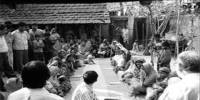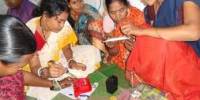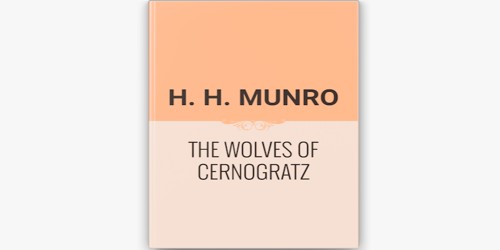Non-governmental organizations (NGOs) are legally constituted organizations created by natural or legal people that operate independently from any form of government. The term originated from the United Nations, and normally refers to organizations that are not a part of a government and are not conventional for-profit businesses. In the cases in which NGOs are funded totally or partially by governments, the NGO maintains its non-governmental status by excluding government representatives from membership in the organization. The term is usually applied only to organizations that pursue wider social aims that have political aspects, but are not openly political organizations such as political parties.
The number of NGOs operating in the United States is estimated at 1.5 million.Russia has 277,000 NGOs. India is estimated to have had around 3.3 million NGOs in 2009, just over one NGO per 400 Indians, and many times the number of primary schools and primary health centres in India.
NGO’S of Bangladesh
Non-Government Organization (NGOs) started in this country in a limited scale as relief provides following the devastating cyclone in 1970, which claimed colossal human lives and properties in the coastal belt and the off-shore islands. Devastations caused by the War of Liberation in 1971 prompted other foreign and newly established local NGOs to mount relief and rehabilitation Programs.
Recognizing the need for development for alleviating endemic poverty in the country, NGOs began to shift their emphasis from relief to socio-economic development and to pursue –initially rather haphazardly Programs aiming at health care, family planning, income generation and self-reliance for the disadvantaged and the poor. As poverty continued to deepen and encompass ever larger numbers of people, more foreign NGOs came to work in this country and at the same time, the members of local NGOs grew fast.
1) Grameen Bank
2) Bangladesh Rural Advancement Committee (BRAC)
3) ASA
4) Proshika.
Total loan disbursement (cumulative) by these four kinds of institutions till December 2010 was taka 434.55 billion; of which disbursement under Government program was taka 37.77 billion (8.69%), Grameen Bank disbursed taka 154.11 billion (35.46%), other Banks and MF-NGOs disbursed taka 78.41 billion (18%) and taka 164.26 billion (37.80%) respectively (figure-1). Recovery rate of all these organizations excluding formal banks and government sponsored programs stood at 95 percent.
Bangladesh Rural Advancement Committee (BRAC)
BRAC, an international development organization based in Bangladesh, is the largest non-governmental development organization in the world, measured by the number of employees and the number of people it has helped, as of November 2012.[1][2][3][4] Established by Sir Fazle Hasan Abed in 1972 soon after the independence of Bangladesh, BRAC is present in all 64 districts of Bangladesh as well as in Afghanistan, Pakistan, Sri Lanka, Uganda, Tanzania, South Sudan, Sierra Leone, Liberia, Haiti and The Philippines as of 2012.
BRAC employs over 100,000 people, roughly 70 percent of whom are women, reaching more than 126 million people. The organization is 70-80% self-funded through a number of commercial enterprises that include a dairy and food project and a chain of retail handicraft stores called Aarong. BRAC maintains offices in 14 countries throughout the world, including BRAC USA and BRAC UK.
BRAC has organized the isolated poor and learned to understand their needs by finding practical ways to increase their access to resources, support their entrepreneurship and empower them to become agents of change. Women and girls have been the focus of BRAC’s anti-poverty approach; BRAC recognizes both their vulnerabilities and thirst for change.
Economic development
BRAC’s Economic Development programme includes microcredit. It provides collateral-free credit using a solidarity lending methodology, as well as obligatory savings schemes through its Village Organisations. Reaching nearly 4 million borrowers, Village Organizations provide loans to poverty groups. BRAC has reached out to those who, due to extreme poverty, cannot access microfinance. BRAC defines such people suffering from extreme poverty as the ‘ultra poor’, and has designed a programme customized for this group that combines subsidy with enterprise development training, healthcare, social development and asset transfer, eventually pulling the ultra poor into its mainstream microfinance programme.
Jaminder-Ginni dolls made by village artisans. Handicrafts like these are sold by Aarong, BRAC’s handicrafts store.
In addition to microfinance, BRAC provides enterprise training and support to its member borrowers in poultry and livestock, fisheries, social forestry, agriculture and sericulture. It provides inputs essential for some enterprises through its ‘Programme Support Enterprises’ that include Poultry farm and disease diagnostic laboratory, Bull Station, Feed Mill, Broiler Production and Marketing, Seed Production, Processing, Marketing and Soil Testing, BRAC Nursery, and Fish and Prawn Hatchery. BRAC’s Vegetable Export programme started in 1998 is a venture that is aimed at bridging the gap between local producers and international markets.BRAC also focuses on the problem of youth employment, providing assistance for young men and especially women to join the workforce, for example, with programs like the Adolescent Development Program. BRAC also has a number of commercial programmes that contribute to the sustainability of BRAC’s development programmes since returns from the commercial programmes are channeled back into BRAC’s development activities. These programmes include Aarong, a retail handicraft chain, BRAC Dairy and Food Project, and BRAC Salt.
Education
BRAC’s Non-Formal Primary Education programme provides five-year primary education course in four years to poor, rural, disadvantaged children and drop-outs who cannot access formal schooling. These one-room schools are for children between eight and fourteen years of age. Each school typically consists of 33 students and one teacher. Core subjects include Mathematics, Social Studies and English. The schools also offer extracurricular activities. As of June 2008, 37,500 Primary Schools and 24,750 Pre-Primary schools have been established by BRAC enrolling nearly 3 million children, 65% of whom are girls. The schools have a drop-out rate of less than 5%.
BRAC has set up centres for adolescents called Kishori Kendra that provide reading material and serve as a gathering place for adolescents where they are educated about issues sensitive to the Bangladeshi society like reproductive health, early marriage, women’s legal rights etc. BRAC has also set up community libraries 185 out of 964 of which are equipped with computers.
Public health
BRAC started providing public healthcare in 1972 with an initial focus on curative care through paramedics and a self-financing health insurance scheme. The programme went on to offer integrated health care services, its key achievements including the reduction of child mortality rates through campaign for oral rehydration in the 80s and taking immunization from 2% to 70% in Bangladesh. BRAC currently provides a range of services that reach an estimated 31 million rural poor and include services for mothers in reproductive health care and infants.In Bangladesh, 78% of births occur in the home. BRAC has implemented a program in which midwives are trained to work in the homes of women to ensure that births are as risk-free as possible. As of December 2007, 70,000 community health volunteers and 18,000 health workers have been trained and mobilized by BRAC to deliver door-to-door health care services to the rural poor. It has established 37 static health centres and a Limb and Brace Fitting Centre that provides low cost devices and services for the physically disabled.
Social development
In 1996, BRAC started a programme in collaboration with the Ain O Shalish Kendra (ASK) and Bangladesh National Women Leader’s Association (BNWLA) to empower women to protect themselves from social discrimination and exploitation of which dowry, rape, acid throwing, polygamy, domestic violence and oral divorce are common in rural Bangladeshi communities and to encourage and assist them to take action when their rights are infringed. The programme has two components: the Social Development component and the Human Rights and Legal Services component.
The Social Development component focuses on building human and socio-political assets of the poor – especially women – through institution building, awareness raising, training and collective social mobilizationThe Human Rights and Legal Services component seeks to empower the poor by increasing their awareness of their rights (legal, human and social) and entitlements through participation in activities like the Popular Theatre and through Human Rights and Legal Education (HRLE) classes arranged by BRAC for its Village Organisation members. BRAC also offers external services such as access to lawyers or the police either through legal aid clinics, by helping women report cases at the local police station or when seeking medical care in the case of acid victims. At the end of June 2006, 124,748 HRLE classes were held and 1,332 acid victim cases and 1,735 rape victim cases were reported. brac
Disaster relief
BRAC conducted one of the largest NGO responses to Cyclone Sidr which hit vast areas of the south-western coast in Bangladesh in mid-November 2007. BRAC distributed emergency relief materials, including food and clothing, to over 900,000 survivors, provided medical care to over 60,000 victims and secured safe supplies of drinking water. BRAC is now focusing on long-term rehabilitation, which will include agriculture support, infrastructure reconstruction and livelihood regeneration.
ICT development
Established in 1996 as BRAC’s IT/ISP wing, BRAC Net Limited is Bangladesh’s one-stop ICT (Information and Communication Technology) solution provider. BRAC Net Limited later formed a Joint Venture Company with US investors gNet/DEFTA Partners in 2005 and KDDI Corporation – the second largest cellular operator and Wireless ISP in Japan in 2009.
BRAC Net has built its nationwide network utilizing its licensed spectrum. Its network today is based on WiMax and fiber optics technology to serve hundreds of large corporations and thousands of Small and Medium Enterprises (SME) and Educational institutions throughout the country. It serves tens of thousands of residential customers directly or indirectly (through resellers) and rural people through its cybercafé franchises, called “e-hut”. For the first time in Bangladesh, the perennially poor can now avail the services available online to improve their quality of life. BRAC Net’s core mission is to create a knowledge based society in Bangladesh. As the sister concern of BRAC, BRAC Net Limited also believes that profit alone should not be the steering factor in this field. With BRACs knowledge of how rural communities function and by realizing the need to create entrepreneurship among young people, BRAC Net has evolved a business model called e-hut.
BRAC Net is committed to establish such interconnected e-huts all over Bangladesh using its fixed WiMAX and optical fibre network. More than 70 e-huts are operating in rural Bangladesh. Services provided by e-hut include internet browsing, broadband connectivity, basic computer and IT training, web cam and digital camera srvice, computer compose and printing, computer servicing, graphics designing, and photocopying amenities to the rural community. e-hut hopes to introduce digital services like IP phoning, e-commerce, video conferencing, money transfer and courier services in the future.
Grameen Bank
The Grameen Bank (Bengali: গ্রামীণ বাংক) is a Nobel Peace Prize winning microfinance organization and community development bank started in Bangladesh that makes small loans (known as microcredit or “grameencredit”[4]) to the impoverished without requiring collateral. The name Grameen is derived from the word gram which means “rural” or “village” in the Bengali language.[5]
The system of this bank is based on the idea that the poor have skills that are under-utilized. A group-based credit approach is applied which utilizes the peer-pressure within the group to ensure the borrowers follow through and use caution in conducting their financial affairs with strict discipline, ensuring repayment eventually and allowing the borrowers to develop good credit standing. The bank also accepts deposits, provides other services, and runs several development-oriented businesses including fabric, telephone and energy companies. Another distinctive feature of the bank’s credit program is that the overwhelming majority (98%) of its borrowers are women.
The origin of Grameen Bank can be traced back to 1976 when Professor Muhammad Yunus, a Fulbright scholar at Vanderbilt University and Professor at University of Chittagong, launched a research project to examine the possibility of designing a credit delivery system to provide banking services targeted to the rural poor. In October 1983, the Grameen Bank Project was transformed into an independent bank by government legislation. The organization and its founder, Muhammad Yunus, were jointly awarded the Nobel Peace Prize in 2006;[6] the organization’s Low-cost Housing Program won a World Habitat Award in 1998. In 2011, the founder Muhammad Yunus was forced out of the Grameen Bank by the Bangladesh Government.[7]
Operational statistics
One unusual feature of the Grameen Bank is that it is owned by the poor borrowers of the bank, most of whom are women. Of the total equity of the bank, the borrowers own 94%, and the remaining 6% is owned by the Government of Bangladesh.[23]
The bank has grown significantly between 2003-2007. As of October 2007, the total borrowers of the bank number 7.34 million, and 97% of those are women.[23] The number of borrowers has more than doubled since 2003, when the bank had only 3.12 million members.[30] Similar growth can be observed in the number of villages covered. As of October 2007, the Bank has a staff of over 24,703 employees and 2,468 branches covering 80,257 villages,[23] up from 43,681 villages covered in 2003.[30]
Since its inception, the bank has distributed Tk 684.13 billion (USD 11.35 billion) in loans out of which Tk 610.81 billion (USD 10.11 billion) has been repaid.[31] The bank claims a loan recovery rate of 96.67%,[31] up from the 95% recovery rate claimed in 1998.[31] David Roodman has critiqued the accounting practices that Grameen used to determine this rate.[25]
There is an estimated demand of 1 billion micro-borrowers globally, with a total loan demand of $250 billion. The present microfinance model is serving 100 million people with $25 billion of loans.[32] The Grameen Bank is 95% owned by the local poor and 5% by the government.[33]
Asha
Asha (aša) is the Avestan language term (corresponding to Vedic language ṛta) for a concept of cardinal importance to Zoroastrian theology and doctrine. In the moral sphere, aša/arta represents what has been called “the decisive confessional concept of Zoroastrianism.” The opposite of Avestan aša is druj, “lie.”
The significance of the term is complex, with a highly nuanced range of meaning. It is commonly summarized in accord with its contextual implications of ‘truth’ and ‘right(eousness)’, ‘order’ and ‘right working’.[3][4] For other connotations, see meaning below.
Its Old Persian equivalent is arta-. In Middle Iranian languages the term appears as ard-.
The word is also the proper name of the divinity Asha, the Amesha Spenta that is the hypostasis or “genius” of “Truth” or “Righteousness”. In the Younger Avesta, this figure is more commonly referred to as Asha Vahishta (Aša Vahišta, Arta Vahišta), “Best Truth”.The Middle Persian descendant is Ashawahist or Ardwahisht; New Persian Ardibehesht or Ordibehesht. In the Gathas, the oldest texts of Zoroastrianism and thought to have been composed by the prophet himself, it is seldom possible to distinguish between moral principle and the divinity. Later texts consistently use the ‘Best’ epithet when speaking of the Amesha Spenta, only once in the Gathas is ‘best’ an adjective of aša/arta.
Proshika
About
The name ‘PROSHIKA’ is an acronym of three Bangla words, which stands for training, education, and action.
Mission
PROSHIKA’s mission is to conduct an extensive, intensive, and participatory process of sustainable development through empowering of the poor.
Vision
PROSHIKA envisages a society which is economically productive and equitable, socially just, environmentally sound, and genuinely democratic.
Description
It has been more than three decades since PROSHIKA, now one of the largest NGOs in Bangladesh, took its first step. Although the PROSHIKA development process started in a few villages of Dhaka and Comilla districts in 1975, the organization formally emerged in October, 1976.
PROSHIKA has successfully completed one more year of its extended period of Phase VI. A constant analysis of the magnitude of poverty and its trends, the strategies effective for its reduction and eventual elimination, and their meticulous implementation has brought PROSHIKA where it is today. The central ethos, however, all the while remained the same human development and empowerment of the poor who gradually stand tall to achieve freedom from poverty by themselves. Empowerment means that the poor are united and organized, become aware of the real causes of their impoverishment, develop leadership among themselves, mobilize their material resources, increase income and employment, develop capacities to cope with natural disasters, become functionally literate, take better care of their health, become engaged in environmental protection and regeneration, get elected in local government bodies and community institutions, and have better access to public and common property resources.
Objectives
PROSHIKA’s objectives are:
i)Structural poverty alleviation.
ii)Environmental protection and regeneration.
iii)Improvement in women’s status.
iv)Increasing people’s participation in public institutions.
v)Increasing people’s capacity to gain and exercise democratic and human rights.
These objectives are achieved through a broad range of programmes in education and training leading to income and employment generation, health education, building of health infrastructure, and environmental protection and regeneration. The programmes are supported by research activities and advocacy campaigns which increasingly call for cooperation with like-minded development partners at the national and international levels. Thus the network of activities in which PROSHIKA is involved links the poorest of the poor with like-minded development actors worldwide.
NGOs Working Area:
01. Sustainable Agriculture and Rural Development (SARD)
02. Environmental & Consciousness Activities
03. A Framework for NGO Activities
04. Micro-Finance & NGOs in Bangladesh
O5. Role of NGOs for Woman Development
06. Role of NGOs for Education, Health Development
07. Leading Domestic, International NGOs & Activities in Bangladesh
NGO’s Weaknesses
- Tourism sites are not properly explored, extracted and managed.
- Lack of investment.
- Low quality services.
- Lack of safety, security and hygiene.
- Lack of infrastructural development.
- Visa requirement and complex visa procedures.
- Absence of sales plan and public relation activities.
- Lack of private initiatives in tourism development.
- Bangladesh cannot offer tourist products and destination packages exclusively to local and foreign tourists. As a result, tourists have to go back to their home with low level of satisfaction.
- The number of supply chain member in the tourism industry is not sufficient to build up a strong base.
- Small number of tour operators, inefficient national airlines, and insignificant role of travel agencies.
- Shortage of professional guides.
- Price of some tourism components like the star and standards hotel rooms, food items, package tours andriver cruise programs are much higher than those of neighboring countries like India and Nepal.
















